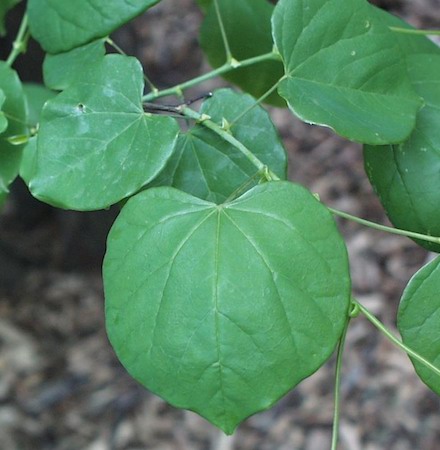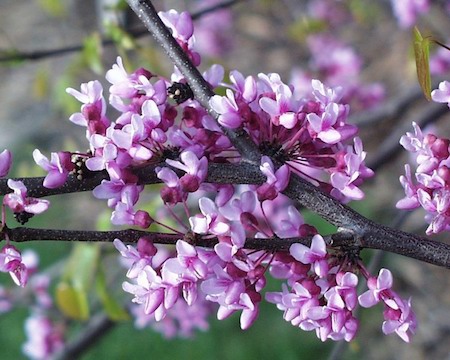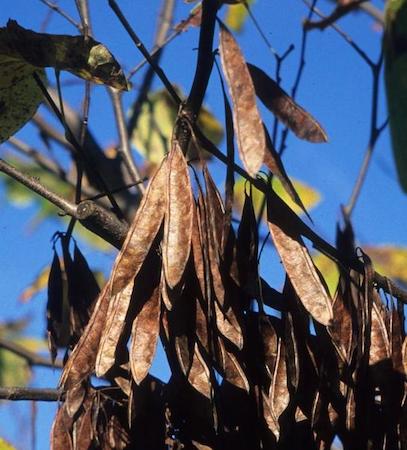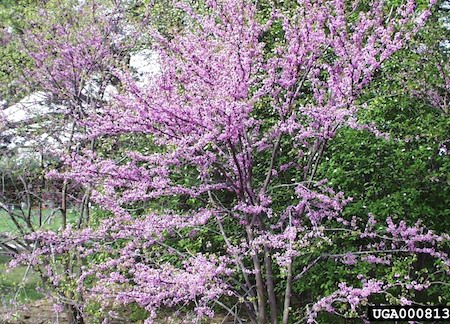Redbud
Specifications
- Also known as: Eastern redbud, Judas tree
- Latin (scientific) name: Cercis canadensis. Cercis is the Latin word for “weaver's shuttle,” perhaps referring to the pod-like fruit; canadensis is Latin for “of Canada.”
- Height: 43 feet
- Circumference: 45 inches
-
The height and circumference measurements listed above are for the largest-known redbud tree in Atlanta. This tree is located at the Historic Gilbert House at Avery Park.
-
Special characteristics:
This is a very common understory tree. It is one of the first to bloom in Spring; its tiny purplish-pink flowers appear on leafless twigs and branches.
-
Annoyance factors:
Birds and animals love to eat the pod-like redbud seeds and spread them around. Thus redbuds are “volunteer” trees--they can spring up out of nowhere. The dilemma is whether to let them grow where they are or remove them. Redbuds are so pretty in bloom, and their heart-shaped leaves look mighty nice. But they are spindly when they are young, and rob other flowering plants of needed sunlight.
Redbuds have a short lifespan. They can provide a nice form to look at when they are older, but they don’t grow to be particularly big.
-
Fun Facts:
The other name for this tree, Judas tree, is based on an old belief that Judas Iscariot hung himself from it. The myth states that after that event, the blooms turned reddish color either from shame or from blood.
The tree was spoken highly of by our forefathers, George Washington and Thomas Jefferson. They transplanted this tree often to grace their gardens.
-
Photo Credits:
Leaves, flowers and tree: Paul Wray, Iowa State University, Bugwood.org
Seeds: John Ruter, University of Georgia, Bugwood.org




